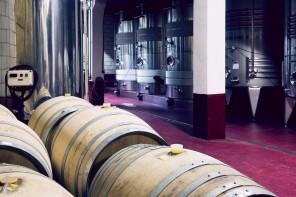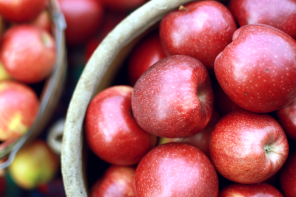Have you ever secretly wanted to punch a wine person in the nose? Especially when you hear them using words that don’t make a ton of sense? Do your eyes glaze over when you become part of a conversation involving the phrase “RS” or “Malo?”
You’re not alone. Heck, sometimes I want to punch wine people in the nose, and I AM one. But we really can’t help it, so please forgive us. And we’re always more than willing, if not ecstatic, to share our own favorite wine words with you. We’re always searching for the most apt way to describe this thing that we love, this thing that consumes us. And truly, it concerns me that the overuse of a language that some just don’t understand turns people off to wine in general. So give me your ear for a minute, and we’ll start to demystify some of this eclectic terminology.
1.) RS. An abbreviation for Residual Sugar. This is one of my least favorite things to say, because I know it’s a dead giveaway that there’s about to be some serious geeking going on. So to keep this explanation short n’ sweet and bearable, just remember that all grapes start out containing sugar. During winemaking, yeast cultures eat the sugar and turn it into alcohol. A winemaker can decide exactly how much sugar to leave in a finished wine by stopping the fermentation (alcohol making) process. Or, often, the yeasts simply give up and die after they’ve eaten enough sugar for their lifespan. With white wines in particular, the level of RS is very important to the finished product. Take Riesling, for example. Many of us like an extremely dry Riesling, with little to no residual sugar. The wine will still display the grape’s natural fruit content even if it is fermented completely dry. But Riesling can still be delicious with a bit more residual sugar left in it- they are just different styles. And just for the sake of conversation, your typical red table wines will have little to zero residual sugar in them.
2.) Malo. An abbreviation for Malolactic Fermentation aka Malolactic Conversion. Yeesh- the second abbreviation in a row! It’s starting to seem like even WE don’t want to say these words! In any case, this one is not quite as technical, it’s just a simple winemaking term. Malolactic Fermentation is a process used on most, if not all, red wines and some white wines. While you won’t necessarily overhear people discussing the merits of Malo while swirling their Pinot Noir, you may hear it come up over the course of Chardonnay consumption. So the deal with Malolactic Conversion is this: it converts one kind of acid into another. Malic Acid is present in wine and has a “hard-edged” quality that is not always desirable. So during the process, the Malic acid is converted into Lactic acid, which has a rounder, softer quality. This conversion takes place thanks to certain bacteria. Which seems gross, but it actually isn’t. So when you hear “Malo”, think about the texture of the wine. Is it silky and soft, or is it tart and a bit piercing? Neither is wrong, but more than likely one went through Malo and one didn’t.
3.) Stemmy. I like this one. First, what does it mean? A “stemmy” wine would be a wine that had some or all of it’s stems fermented in with the grapes during winemaking (known as whole cluster fermentation). As in, the stems that the grapes grew on. This is another one of those winemaking decisions that is based on the type of grape in question, the style the winemaker is going for, or that year’s growing conditions. It seems fairly common with Pinot Noir making in particular; in Oregon it’s common for winemakers to adjust what percentage of grapes they ferment “whole cluster” from year to year. In warmer years with more ripeness, there may be a higher percentage. The intention there would be to balance out the hefty fruit content. But if they wanted all fruit, all the time? Skip the stems. So what exactly does “stemmy” taste like, and is it good or bad? That’s a bit subjective. I dig a bit of stem. Most might describe a “stemmy” taste as green, maybe a bit tannic, possibly even bitter. But it can also provide a nice backbone, or even just something to make your brain go “hmmm… what’s that?” It’s a piquing of interest. But hey, it’s okay if you’re not into it.
4.) Corked. I remember this being SO frustrating for me when I first got into wine. I would watch people smell a wine, declare it “corked”, and immediately it would be whisked away like yesterday’s trash. But finally one day, I smelled it: WET CARDBOARD. And once you smell the corked smell, you will always smell it. There is some science behind that- it has to do with your detection threshold versus your recognition threshold. Yadda yadda yadda… it means, your nose “learns” how to recognize a smell. Once you can detect it, you recognize it forever. Kind of neat. So, now you’ve gotten a whiff of wet cardboard- still, what does it MEAN? Why does it smell this way? A corked wine is a wine that is contaminated by a chemical called TCA, or cork taint. Contaminated? Barf. But yes, that’s what happens. And it is NOT caused by little pieces of cork floating around in the bottle, although that would seem logical. TCA is created when naturally occurring fungus found in cork (cork is, after all, a tree) come into contact with certain chlorine agents used in sanitizing equipment. That’s all it takes- like Superman and Kryptonite. The TCA bastards then essentially kill all the good flavors in the wine and you get nothing but musty basement, moldy dish towels, and wet cardboard. Yuck.
5.) Barnyard. Imagine you’re on a date. Your date orders a bottle of wine, takes a big inhale of it and says “Ahhh.. it’s so barnyardy!” and smiles. You may want to quickly vanish into thin air. How could this person think a barnyard smells good? Am I on a date with an Amish person and I just don’t know it? What does this person’s apartment look like if he (or she) thinks a barnyard smells good? Don’t get too carried away. You’re on a date with a wine person! Truly, describing a wine as “barnyardy” is pretty much just what it sounds like; the wine has “The Funk.” You don’t have to like The Funk. But don’t rule it out completely. The Funk is common in parts of France, and is often thanks to a yeast called Brettanomyces. A dash of “Brett” can be quite compelling: sweaty leather, hay, horse barn, cured meat and even- I’ll just come out and say it- cow poop. If you grew up in an area that had farms, you may be one of those people that enjoys the smell of manure as you drive past a farm with your windows down. Like me. Maybe these smells just make some people nostalgic? Who knows. All I’m sayin’ is, give The Funk a chance.
In closing, now would be a good time to teach you another great phrase for hanging out with wine people: “Shut up and drink it.”








